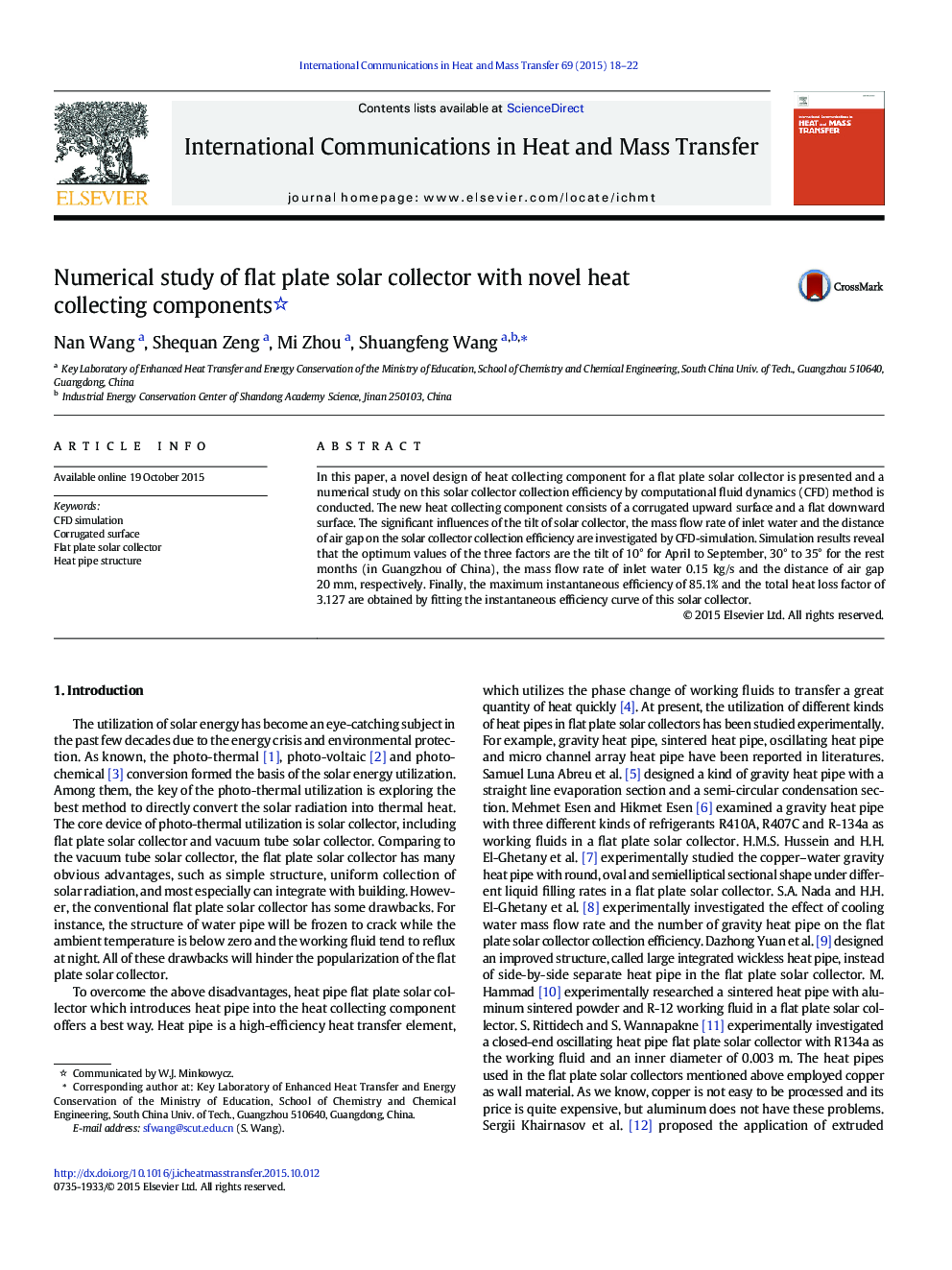| Article ID | Journal | Published Year | Pages | File Type |
|---|---|---|---|---|
| 652994 | International Communications in Heat and Mass Transfer | 2015 | 5 Pages |
In this paper, a novel design of heat collecting component for a flat plate solar collector is presented and a numerical study on this solar collector collection efficiency by computational fluid dynamics (CFD) method is conducted. The new heat collecting component consists of a corrugated upward surface and a flat downward surface. The significant influences of the tilt of solar collector, the mass flow rate of inlet water and the distance of air gap on the solar collector collection efficiency are investigated by CFD-simulation. Simulation results reveal that the optimum values of the three factors are the tilt of 10° for April to September, 30° to 35° for the rest months (in Guangzhou of China), the mass flow rate of inlet water 0.15 kg/s and the distance of air gap 20 mm, respectively. Finally, the maximum instantaneous efficiency of 85.1% and the total heat loss factor of 3.127 are obtained by fitting the instantaneous efficiency curve of this solar collector.
